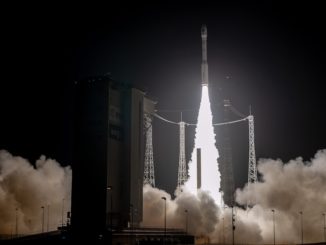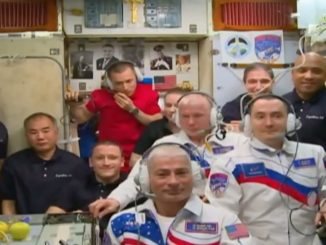A late-night liftoff Thursday lit up the forested shoreline of South America as a Russian-made Soyuz rocket streaked into orbit with two new satellites for Europe’s Galileo navigation system.
The 15-story rocket launched at 0208:10 GMT Friday (10:08:10 p.m. EDT; 11:08:10 p.m. local time) from the Guiana Space Center, adding the ninth and 10th satellites to the Galileo navigation network, a European analog to the U.S. Global Positioning System and Russia’s Glonass positioning platforms.
The rocket soared into clear skies over French Guiana, flew around the world and deployed the twin satellites nearly 15,000 miles above Earth about four hours later.
Read our full story.
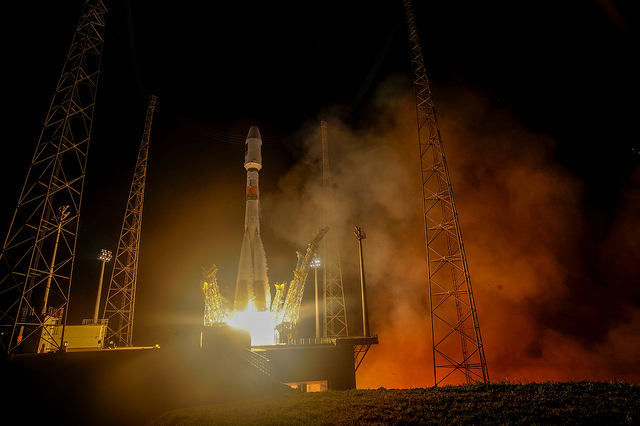
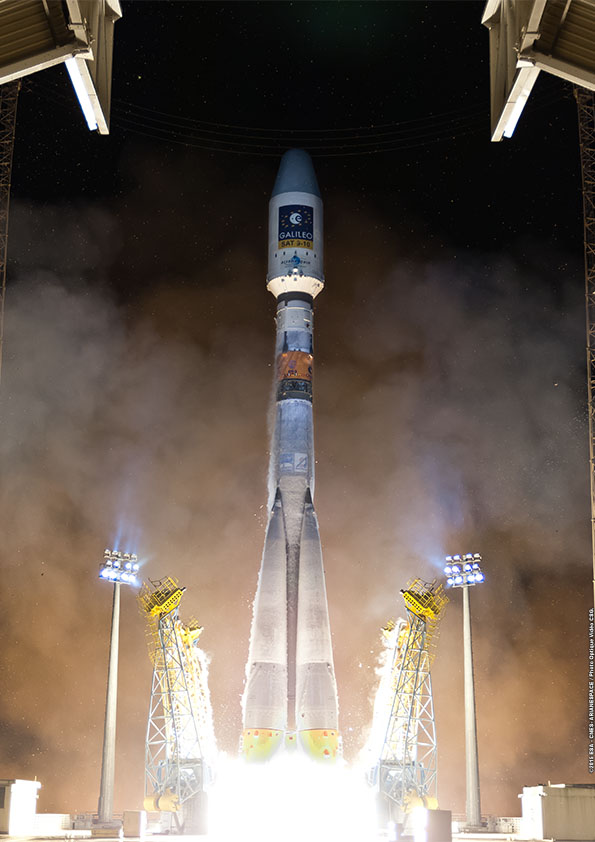
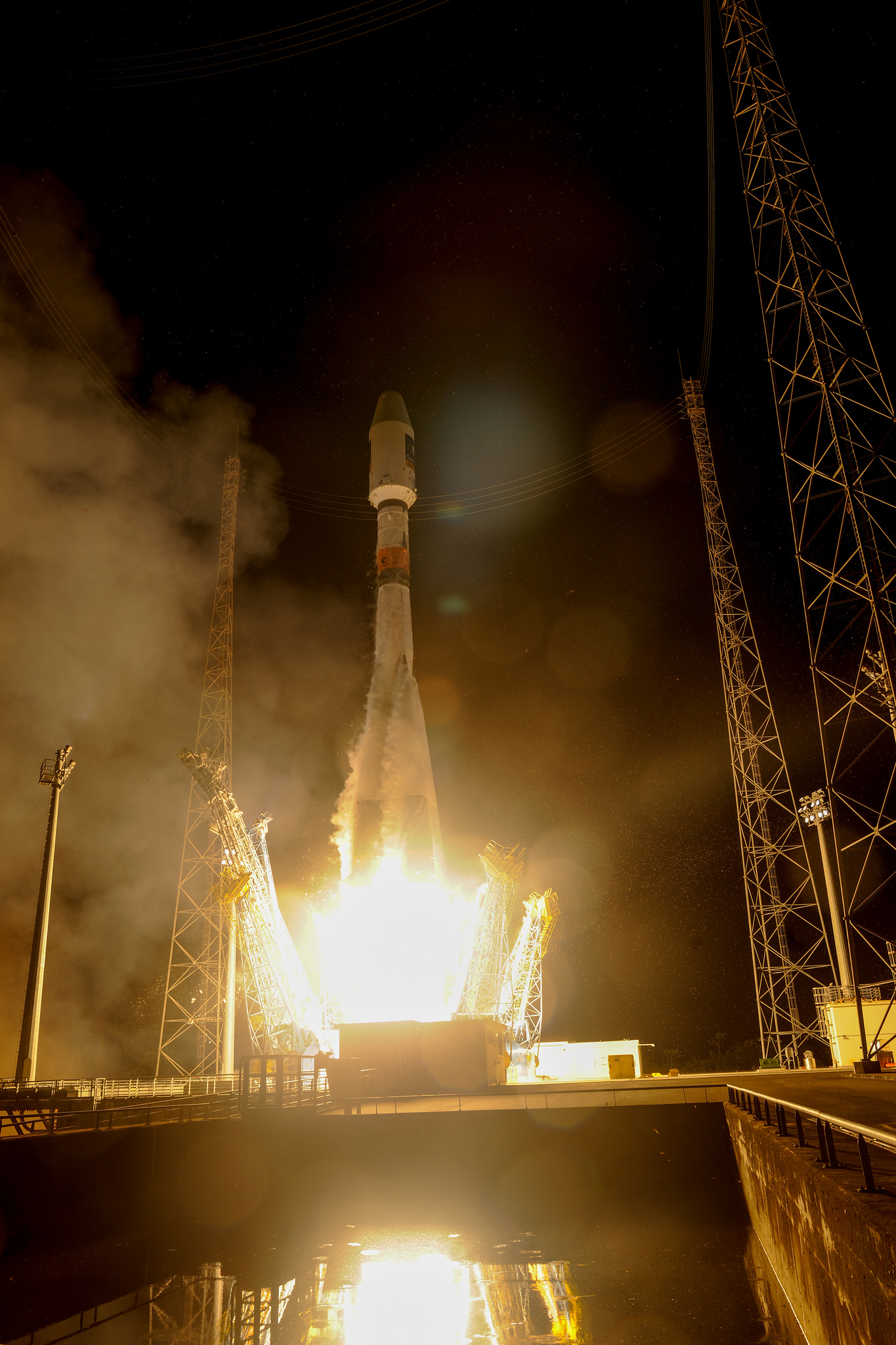
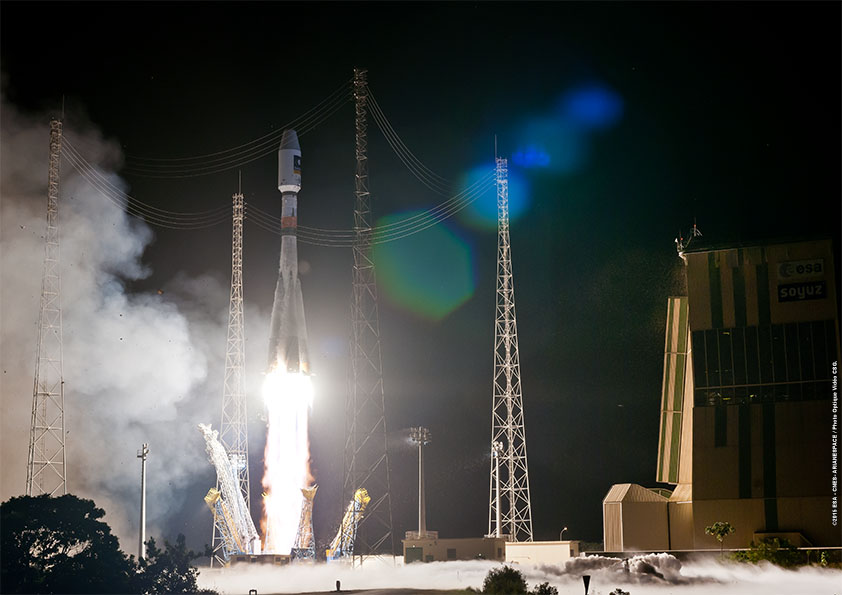
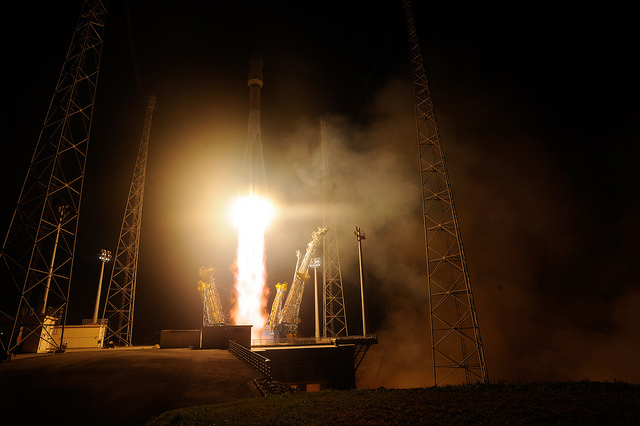
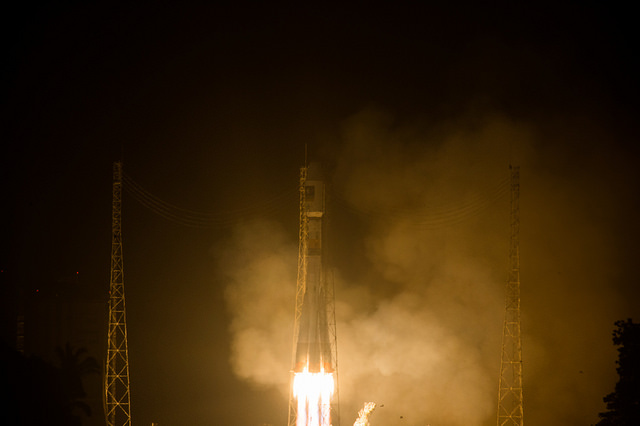
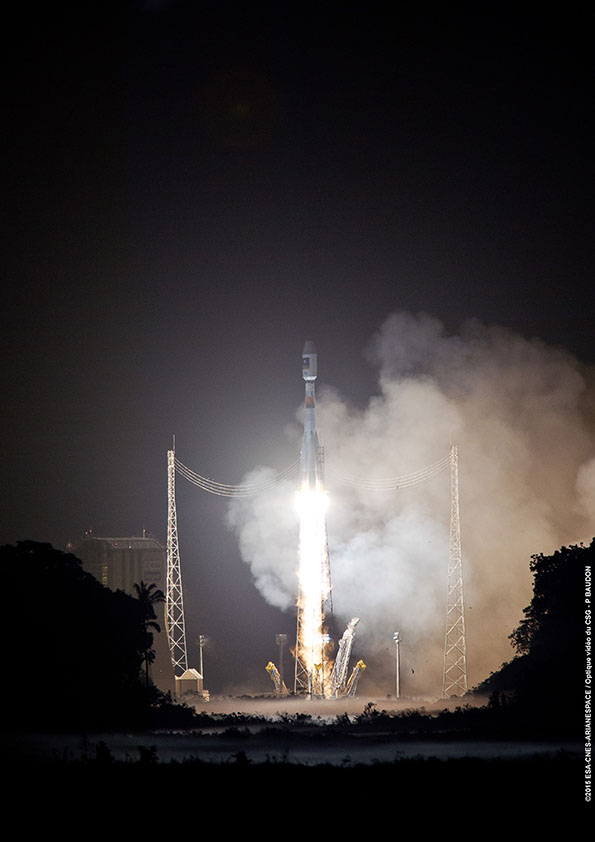
Email the author.
Follow Stephen Clark on Twitter: @StephenClark1.


